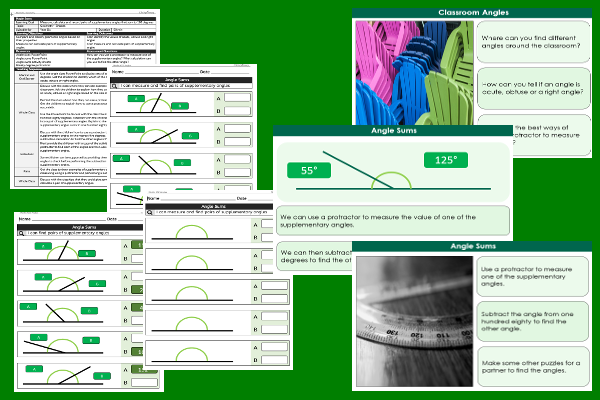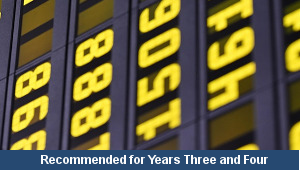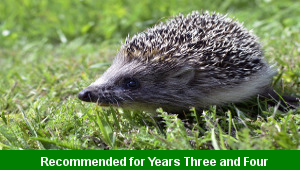Lesson Four – Angle Sums

This maths teaching pack for Key Stage Two gets the children to explain and model how to measure, calculate and record different pairs of supplementary angles that sum to one hundred and eighty degrees.
The class can identify and model the number calculations that can be completed to find one of the supplementary angles for each pair of angles.
Download this teaching pack including a lesson plan, classroom activities and an interactive presentation to explain and model how to measure, calculate and record different pairs of supplementary angles that sum to one hundred and eighty degrees
Activities in this teaching pack include a differentiated set of worksheets to record how to measure, calculate pairs of supplementary angles that sum to one hundred and eighty degrees using a protractor to find the size of one angle and number calculations to find each matching supplementary angle.
The interactive presentation gets the children to explore how to measure, calculate and record pairs of supplementary angles that sum to one hundred and eighty degrees.
This lesson is part of a maths scheme of work to get the children to explore and record the properties of different shapes by identifying, classifying and measuring a range of their matching angles. There are teaching activities for shared learning, differentiated worksheets to support independent learning and interactive presentations to introduce concepts and key skills.
-

Rounding Hundreds
Explain and model how to round some different numbers to the nearest hundred based on the place values of the digits in each number
-

Rounding Tens
Identify and record how to round some different numbers to the nearest ten based on the place values of the digits in each number
-

Classic Animal Stories
Investigate the structure and content of classic works of fiction by significant authors with animals as the main characters
-

Cities, Towns and Villages
Research and present the history of a range of different buildings and people that are part of the local community using a school exhibition
